Retinoic acid-induced differentiation and oxidative stress inhibitors increase resistance of human neuroblastoma cells to La Crosse virus-induced cell death
- PMID: 39382324
- PMCID: PMC11575257
- DOI: 10.1128/jvi.00300-24
Retinoic acid-induced differentiation and oxidative stress inhibitors increase resistance of human neuroblastoma cells to La Crosse virus-induced cell death
Abstract
La Crosse Virus (LACV) encephalitis patients are at risk for long-term deficits in cognitive function due to neuronal apoptosis following virus infection. However, the specific etiology underlying neuronal damage remains elusive. In this study, we examined how differentiation and mitotic inhibition of neuroblastoma cells influence their susceptibility to LACV infection and cell death. Treatment of SH-SY5Y cells with retinoic acid induced a neuronal cell phenotype which was similarly susceptible to LACV infection as untreated cells but had significantly delayed virus-induced cell death. Protein and RNA transcript analysis showed that retinoic acid-treated cells had decreased oxidative stress responses to LACV infection compared to untreated cells. Modulation of oxidative stress in untreated cells with specific compounds also delayed cell death, without substantially impacting virus production. Thus, the oxidative stress response of neurons to virus infection may be a key component of neuronal susceptibility to virus-induced cell death.
Importance: Encephalitic viruses like La Crosse Virus (LACV) infect and kill neurons. Disease onset and progression is rapid meaning the time frame to treat patients before significant and long-lasting damage occurs is limited. Examining how neurons, the primary cells infected by LACV in the brain, resist virus-induced cell death can provide avenues for determining which pathways to target for effective treatments. In the current study, we studied how changing neuroblastoma growth and metabolism with retinoic acid treatment impacted their susceptibility to LACV-induced cell death. We utilized this information to test compounds for preventing death in these cells.
Keywords: La Crosse virus; all-trans retinoic acid; interferon; mitochondria; neuroblastoma; neurodifferentiation; oxidative stress.
Conflict of interest statement
The authors declare no conflict of interest.
Figures
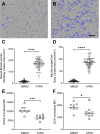
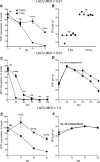
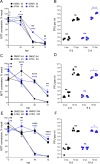

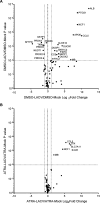
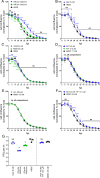
Similar articles
-
Age influences susceptibility of brain capillary endothelial cells to La Crosse virus infection and cell death.J Neuroinflammation. 2021 Jun 3;18(1):125. doi: 10.1186/s12974-021-02173-4. J Neuroinflammation. 2021. PMID: 34082753 Free PMC article.
-
Human neural stem cell-derived neuron/astrocyte co-cultures respond to La Crosse virus infection with proinflammatory cytokines and chemokines.J Neuroinflammation. 2018 Nov 15;15(1):315. doi: 10.1186/s12974-018-1356-5. J Neuroinflammation. 2018. PMID: 30442185 Free PMC article.
-
Age-dependent myeloid dendritic cell responses mediate resistance to la crosse virus-induced neurological disease.J Virol. 2014 Oct;88(19):11070-9. doi: 10.1128/JVI.01866-14. Epub 2014 Jul 9. J Virol. 2014. PMID: 25008929 Free PMC article.
-
Innate immune response to La Crosse virus infection.J Neurovirol. 2014 Apr;20(2):150-6. doi: 10.1007/s13365-013-0186-6. Epub 2013 Jul 12. J Neurovirol. 2014. PMID: 23846288 Review.
-
La Crosse virus encephalitis in children.Curr Opin Infect Dis. 2024 Oct 1;37(5):419-424. doi: 10.1097/QCO.0000000000001042. Epub 2024 Jul 24. Curr Opin Infect Dis. 2024. PMID: 39079177 Review.
References
MeSH terms
Substances
Grants and funding
LinkOut - more resources
Full Text Sources
Medical

